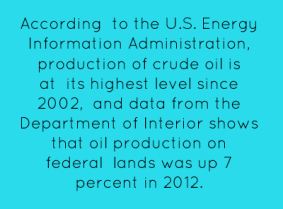Western Energy Alliance is hard at work spinning their new survey, which underscores the lengths to which they’ll go to increase the profit margins of the billion dollar oil and gas industry – even when that means putting water, public health, and local communities at risk.
WEA announced their new poll a month ago, but just released the results today. Was it because they needed all that time to figure out how to spin the poll?
Unfortunately for WEA, since they included so many factually incorrect statements in the poll, they won’t be able to use their results for much other than spin sessions. And, this isn’t the first time that WEA and their vice president for government affairs, Kathleen Sgamma, haven’t been able to keep their facts straight or master basic grade school multiplication skills.
While WEA’s poll also spins that the public supports hydraulic fracturing, there are already 351 towns and cities across the U.S. that have taken action to limit or ban fracking within their borders.
Here’s a look at some of the most glaring factual errors from the WEA poll materials:
WE A claim #1: “The government has prevented oil and natural gas development on federal lands, even though less than one-tenth of 1% of public lands is being used for oil and natural gas today.”
A claim #1: “The government has prevented oil and natural gas development on federal lands, even though less than one-tenth of 1% of public lands is being used for oil and natural gas today.”
Facts: Both the federal government and industry has aggressively pushed to increase drilling activity on public lands. According to the U.S. Energy Information Administration, production of crude oil is at its highest level since 2002, and data from the Department of Interior show that oil production on federal lands was up 7 percent in 2012. This is despite the fact that nearly 21 million of the almost 39 million acres of public lands leased to the oil and gas industry sit idle.
WEA claim #2: The oil and gas industry do such a great job cleaning up lands where they’ve drilled that they’re considered wilderness, or pristine areas, post-clean up.
 Drilling infrastructure in Wyoming. Source: EcoFlight
Drilling infrastructure in Wyoming. Source: EcoFlightFacts: Reports on reclamation efforts in Utah, Wyoming and New York have shown that:
restoration attempts often fail and create long-lasting problems that threaten western wildlife;companies fail to provide adequately funded bonding, leaving behind billions in clean-up costs for states such as Wyoming; andthe oil and gas industry often fails to plug depleted wells – industry neglected to plug 89 percent of wells in New York.In fact, a recent Government Accountability Office (GAO) analysis pointed to a highly inadequate system for funding clean-up of oil and gas wells on public lands.
WEA claim #3: “Increased energy production of American energy from public lands will lead to lower energy costs for consumers.”
Fact: Unfortunately for WEA’s spin team, experts agree – from BusinessWeek to the Energy Security Leadership Council – that the global market actually drives consumer oil prices, not U.S. production levels, so increased U.S. drilling doesn’t lead to lower energy prices.
Polls are only worth the paper they’re printed on if they fail to relay facts in a straightforward and honest way. Clearly, Western Energy Alliance and the companies they represent such as Anadarko and Noble care more about spin than they do about facts.




0 comments:
Post a Comment